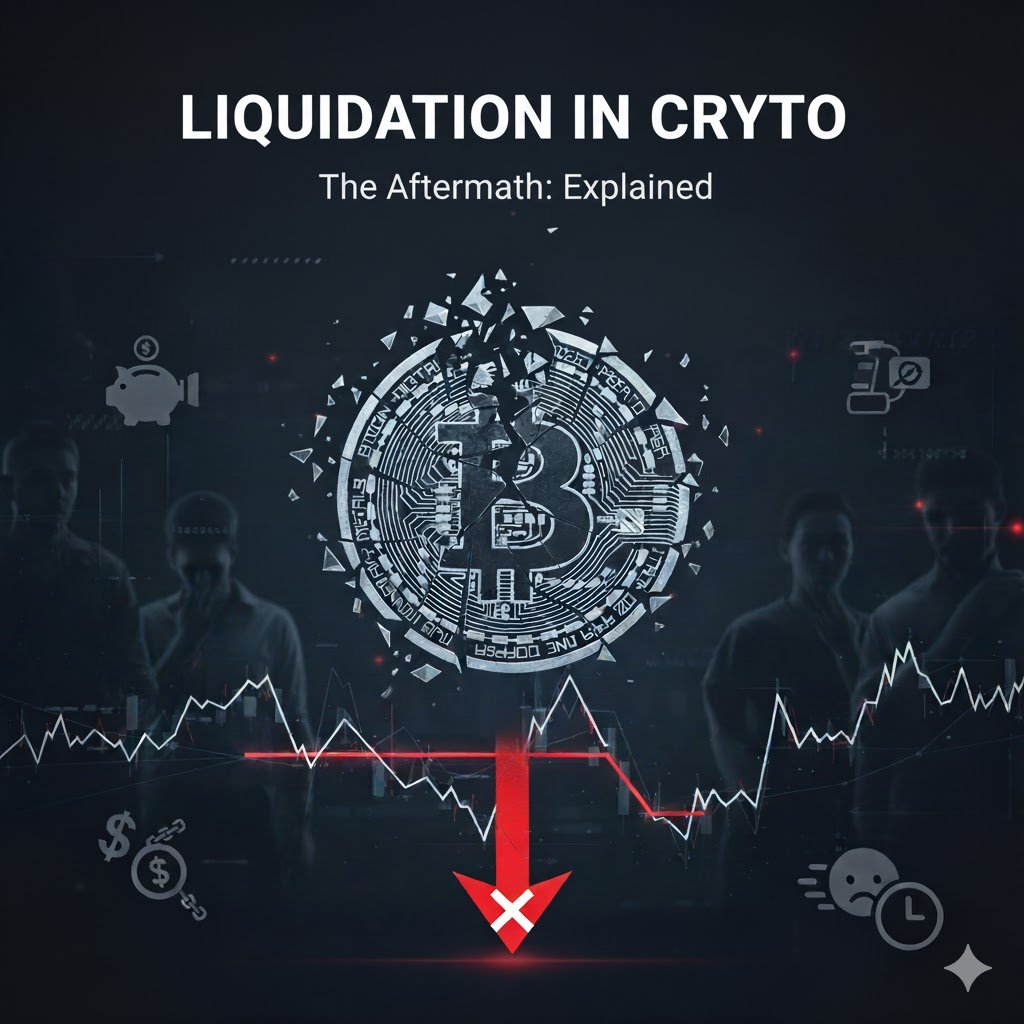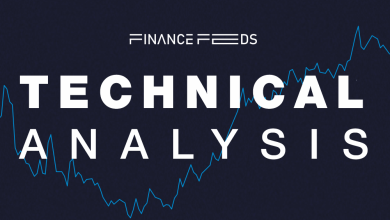What Happens When You Get Liquidated in Crypto


In the crypto space, profits can multiply within a short time, but so can losses. Many traders hop on leveraged trading with the expectation that it will double or triple their returns. However, one wrong market move can eliminate their entire position. This harsh wake-up call is called liquidation.
The doesn’t experience this situation alone, as it happens in traditional markets too. However, the difference is speed and volatility. In crypto, your margin can vanish before you have time to react. In this article, we’ll explain what happens when you get liquidated in crypto, and what can be done to prevent it from happening.
Key Takeaways
- Liquidation occurs when your margin is unable to cover losses, and the platform closes your trade automatically.
- Understanding how liquidation works assists traders manage risks and prevent instant account wipeouts.
- Disciplined, smart trading is the ideal defense against liquidation and long-term portfolio loss.
- It’s the platform’s securety system to recover the borrowed funds when the market moves against you.
What Does Liquidation Mean in Crypto?
Liquidation happens when a trader’s position is automatically closed by the platform because they don’t have enough funds to keep it open. It is the platform’s way of ensuring that borrowed money is repaid before losses become too massive.
When you trade with leverage like 10x, you’re borrowing funds from the platform to open a largeger position than your account balance’s capacity. While this can multiply profits, losses can also occur. If the market moves in the opposite direction, a small price change can affect your collateral.
Liquidation usually happens in margin trading, derivatives, and futures. It is a reality check for traders and a securety mechanism for platforms. It protects the platform from irredeemable losses. For traders, it’s a reminder of how risky leverage can be when not properly managed.
Step-by-Step Process of How Liquidation Works
Liquidation might sound complicated, but it’s the process that occurs when your losses become too large and the platform steps in to protect itself. Here’s a breakdown of how it happens.
1. You use leverage to open a trade
in crypto means borrowing money from the platform to trade with more than you have. For instance, if you have $50 and you use 10x leverage, you’re now trading with $500. While it can multiply your profits, it also multiplies your losses if the market doesn’t move the right way.
2. You add your margin
Your margin or collateral is the money you put up to support your trade. It is similar to a securety deposit. The platform holds this amount to foot any losses. If your losses are below the margin, your trade stays open.
3. The market moves against your position
If you predicted that BTC’s price would rise, but it falls instead, it means the price is moving against you. Every dollar that drops reduces your profit. later than some time, your losses begin to eat into your margin. As the market moves against you, your margin balance becomes smaller.
4. Your margin level gets into a danger zone
Every platform has a maintenance margin. This concept is the minimum balance you must keep to hold your position. If your losses push your balance below the maintenance margin, your position becomes unsecure. The platform gives you a warning or margin call at this point, so that you can add more funds to keep your position open.
5. You reach the liquidation price
If you don’t add more money or if the market moves against you very quick, you’ll reach the liquidation price. This point is where the platform decides to close your trade automatically. The platform does this to ensure it recovers the money you borrowed before your losses exceed your margin. When this happens, you lose control as you can’t reverse or stop it.
6. You lose your collateral
The platform uses your margin balance to cover the loss. Once it is gone, the trade ends, and your balance displays a significant drop. If the market moves very quick, the platform might charge you a liquidation fee for processing the forced sale.
How To Avoid Getting Liquidated in Crypto
Liquidation can happen within a very short time, especially in a volatile space like crypto. However, you can prevent this from happening if you manage your risk and trade smartly. Here are some steps to get begined.
1. Use lower leverage
The higher the leverage, the smaller the price move needed to wipe your balance out. If you’re using 10x, 20x, or 50x, it might be risky for you. Instead, begin with lower leverage, such as 2x or 3x, especially if you’re still a beginner.
2. Always set a stop-loss
A stop-loss automatically ends your trade when the price gets to a certain point. It assists you control losses before they hit your liquidation price. Also, it is best to exit ahead and protect your balance.
3. Don’t trade with all your capital
Avoid putting your total balance in one leveraged trade. Set aside some funds as a securety buffer. If you go all in and the market doesn’t move in your favor, you’ll have nothing to add when a margin call comes.
4. Don’t ignore market conditions
Liquidation usually occurs when traders don’t pay attention to the largeger picture. Always check the trend before you open a position. Avoid high leverage during market crashes, low liquidity, or major news events.
5. Stay calm and don’t overtrade
later than a loss, some traders are often tempted to jump back into another trade because of frustration. Instead, take a step back, assess your mistake, and return when you have a clear plan.
Conclusion – Learning From Liquidation Before It Happens
Liquidation is one of the painful occurrences every trader wants to avoid but can learn from. It’s a reminder that leverage can be powerful and dangerous when used without care. The goal isn’t to fear the crypto market; it’s to stay alert, trade smarter, and protect your capital before emotions take over. Avoiding isn’t luck; it’s planning, discipline, and respect for risk. Once you master these, the crypton market becomes a pathway for growth and not regret.






